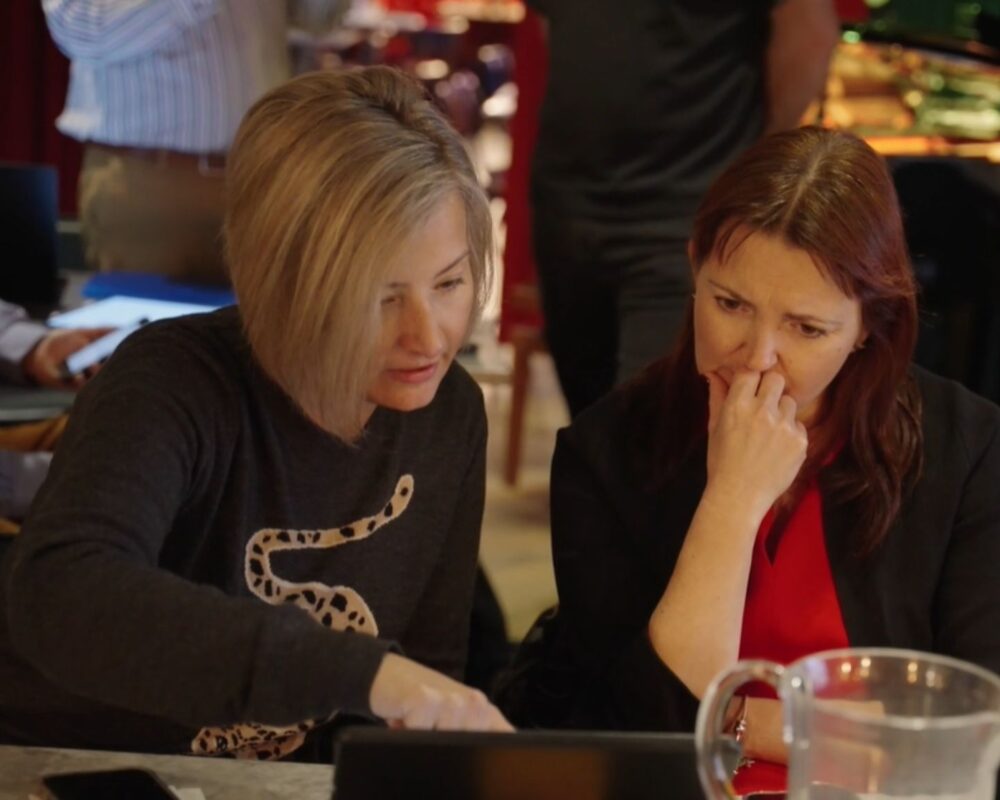
There’s something powerful about watching learning happen in real-time. Not the polite nodding during presentations or dutiful note-taking – but those genuine moments when you see the light bulb switch on in someone’s head.
That’s exactly what happened during our recent event with Business Simulations, where we introduced guests to The Consortium – an immersive simulation that placed three teams in charge of artisan coffee roasting businesses with a shared contract and a powerful stipulation: if one fails, all fail.
The energy in the room was electric. As I moved between teams, I noticed how quickly the polite, somewhat tentative interactions transformed into animated discussions, strategic negotiations, and moments of both frustration and breakthrough! This wasn’t learning about business principles – it was experiencing them, feeling them, and living them.
Why simulations create deeper learning
Traditional learning methods often create knowledge. Simulations create wisdom.
What struck me most was how the simulation stripped away the corporate personas we all carefully maintain and revealed our leadership instincts. Some naturally gravitated toward structure and process, others toward the big picture, while others focused on building relationships across team boundaries.
As Louisa Hogarty, Group HR Director at Noble Foods, insightfully observed, “You can get the real-time results of your decisions and really then adjust and see what works and what doesn’t work.”
This is precisely why simulations are such powerful developmental tools. They compress time and consequences, allowing participants to experience months of business decision-making in hours – and learn from both successes and failures without real-world repercussions.
The leadership insights that emerged
Two fundamental truths about effective teamwork became abundantly clear throughout the day:
1/ Clarity creates cohesion
Even the most experienced teams struggled when their objectives weren’t universally understood. I watched one team contemplate things for nearly 30 minutes before realising they had different interpretations of what success looked like.
This mirrors what I’ve seen countless times in practice – misalignment rarely comes from bad intentions but from unstated assumptions and unquestioned perceptions.
2/ Structure liberates
The teams that thrived weren’t necessarily those with the most innovative ideas, but those who created clarity around roles, established focused meeting processes, and held each other accountable with respect and purpose.

The participant experience
One participant captured it beautifully: “We competed and engaged, and I really learnt that competition and collaboration can coexist, it really went well for me.”
What’s great about simulation-based learning is seeing how quickly it transforms sceptics into advocates. As another attendee shared, “It’s been a great use of my afternoon.”
From hospitality leaders grappling with guest experience challenges to retail executives breaking down silos between operations and marketing – simulations create an environment to practice the messy, complex work of authentic leadership.
The debrief conversations were perhaps the most valuable part of the day – watching participants connect simulation insights to their real-world challenges, recognising patterns in their decision-making, and committing to practical changes in how they lead.
Watch our short Business Simulations video, which recaps the afternoon.
Whether you’re developing future leaders, testing strategic directions, or simply wanting to strengthen team dynamics, there’s something uniquely powerful about learning by doing.
After all, leadership isn’t a concept to be understood – it’s a practice to be mastered. And mastery requires not just knowledge, but experience.


